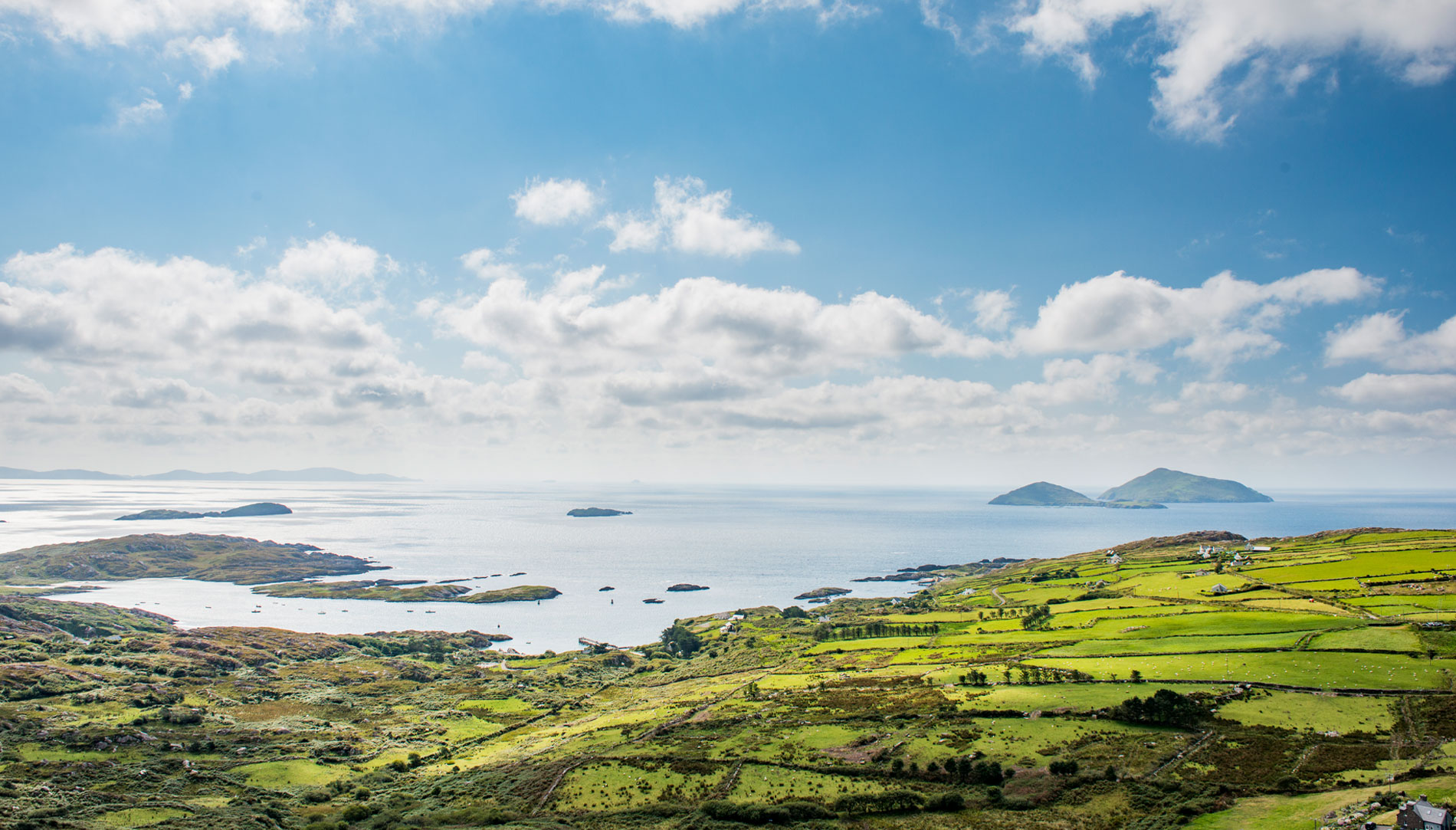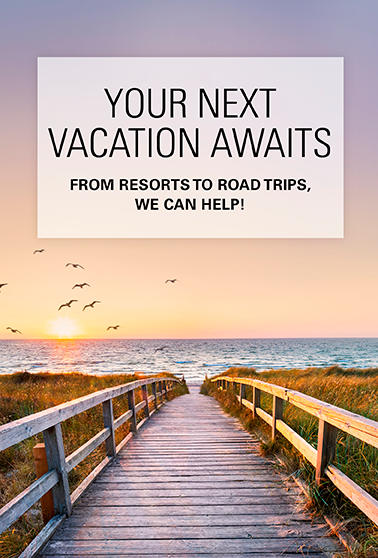The Emerald Isle’s Wild Atlantic Way Opens the Door to Cultural Discovery
The dense-flowered orchid, its pale petals tightly wound atop a 10-inch stalk, looks at home among scattered limestone boulders. Never mind that this species is more commonly associated with tropical areas than it is with the rugged North Atlantic climes of Ireland’s west coast. Here on the Burren in County Clare, the sight of resilient orchids poking out of the otherworldly karst landscape is just one of the many surprises I have discovered on Ireland’s Wild Atlantic Way.
Among the world’s longest named driving routes, this 1,500-mile network of roads and highways traces Ireland’s west coast, from Kinsale in the south up to Derry, leading past and through a seemingly mythical world of coves, cliffs, rock, forest and sand. Formally established in 2014, the route links stretches that have been popular with road trippers for decades with uniform signs and, where possible, roadway improvements. This has made it easier for travelers seeking to visit famous spots such as the Ring of Kerry, the Dingle Peninsula, Limerick and Galway, among others, to discover the lesser-known landmarks and towns that offer intimate exposure to Ireland’s fascinating cultural and historic attractions.

The Beara Peninsula
From Dublin Airport, a four-hour drive southwest brings me to the coastal city of Glengarriff, population 800, on the Beara Peninsula. From the town’s port, I board a ferry for a 15-minute ride to Garnish Island (above), where I discover the first of coastal Ireland’s many natural surprises. The 37-acre island is famed for its lush gardens, which took shape shortly after John Annan Bryce, a financier from Belfast, purchased it in 1910. After positioning an initial lot of plantings, “yet one more” garden was followed by another, and then another, and so on. Today visitors come to stroll the colorful complex, marvel at structures such as the Grecian Temple, a four-columned stone gazebo bordered by miniature rhododendrons from Japan and rare Tasmanian pines, and sit for afternoon tea in the Casita (the island is open from April through October). “The Gulf Stream embraces West Cork,” explains Finnbar O’Sullivan, the horticulturist who serves as the island’s caretaker. “Absolutely everyone is surprised by the lush, tropical plants we grow here.”
It is said that pubs in Ireland are like community living rooms, and I am reminded of this at MacCarthy’s Bar in Castletownbere, a bustling Beara Peninsula fishing village about a half-hour west of Glengarriff. On a lively weekend night, the low-ceilinged, dimly lit room is packed with townsfolk of all stripes, from hardy fishermen to grandmothers, and even a few children with their parents. A trio of musicians on guitar, accordion and bodhrán (a handheld Celtic drum) are playing their set in a corner as I settle into a snug table in an area that is partially walled off from the rest of the space. The proprietor, Adrienne MacCarthy, explains that this section was once reserved for female imbibers. As we talk, she regales me with colorful anecdotes about her family’s establishment and shows me a prized possession: a genuine samurai sword. The glinting artifact was a gift to her physician father from his Japanese captors during World War II, for treating all wounded, regardless of their nationality, while serving as a prisoner of war.

The Remarkable Skelligs
The roads, the scenery and the proximity of towns to each other allow me to establish a comfortable pace. A few hours of driving each day is accompanied by stops to admire various sights (many are identified as “discovery points”) or to grab a meal, before I reach the next town for a one- or two-night stay. Though the distances between towns are not long, speeds are limited by the narrow, winding nature of the roads, not to mention the occasional herd of sheep or cattle. As I venture north from Castletownbere, it only takes a few hours to reach County Kerry’s Portmagee Marina, which, among other things, is the gateway to UNESCO-listed Skellig Michael island, home to one of the world’s most remarkable monastic settlements.
Seeking to avoid persecution for their religious beliefs in the sixth century, the Skellig monks established their monastery about 8 miles off the shore on a nearly 700-foot-tall island formed entirely of rock, inhospitable to vegetation and devoid of life. On the island, which came to be known as Skellig Michael (above), they built beehive-shaped stone huts for living quarters up top, and hiked down to the shore to fish for their meals. Over time, they carved still-visible staircases into the island’s steep rock faces. After the monks abandoned the island in the 12th century, it became a pilgrimage site. Today, tours of Skellig Michael and neighboring Little Skellig, home to one of the world’s largest northern gannet colonies, are available when weather conditions permit.

Tastes of Culture in Dingle
A two-hour drive north around Castlemaine Harbour brings me to the Dingle Peninsula, home to steep sea cliffs, sandy beaches and a mountain range that forms its spine. Its main town, Dingle, is a bucolic canvas of signal flag–bright facades. Having heard about its thriving culinary scene, I had signed up for a three-hour class at the Dingle Cookery School (above), founded by two local chefs, before I left home. As our instructor feeds our class (eight people) tidbits of local cultural history, we learn traditional ways to bake brown soda bread, cure lamb and prepare shepherd’s pie, which has since become my son’s favorite dish back at home.

Amazed by the Burren and the Cliffs of Moher
With 159 marked discovery points along the Way, one would need weeks to hit all the highlights on a single visit. Unfortunately, my itinerary is much shorter, but I still have time to visit the Cliffs of Moher and the Burren (above). The latter is an ecologically diverse landscape of pavement-like limestone, with Arctic, Mediterranean and alpine vegetation thriving together in the fertile soil that fills the crevices between rocks. Covering about 200 square miles, mostly in northwest County Clare, the Burren’s human history is believed to date back 4,000-6,000 years, and about 70 megalithic tombs have been discovered across the region. Along a portion of the Burren’s western shore, the dizzying cliffs (shown at top), which rise more than 700 feet above the ocean, are home to guillemots, razorbills and numerous other seabirds. In 2011, local officials created the Burren and Cliffs of Moher Geopark to protect these unique and sensitive areas.
On a two-hour boat tour beneath the cliffs with the Doolin Ferry Company, I struggle to snap photos of the pelagic birds as they furiously flap against the wind out of sight. Fortunately, the cliffs’ famous geological features, including Hag’s Head and the An Branán Mór sea stack, offer rock-solid poses for their “portraits.” Back on land, I am left in speechless wonder as I gaze out from cliffside trails toward Galway Bay and the Aran Islands, home to ancient forts and some of Ireland’s first monasteries.
But I am most impressed by the Burren, home to 1,000 of Ireland’s 1,300 plant species and breeding ground for more than 100 types of birds, which also include nesting Atlantic puffins, willow warblers and peregrine falcons.
On a tour with Heart of Burren Walks, I discover that the Burren’s hiking conditions are every bit as diverse as its flora and fauna, with miles of trail traversing up ridges, through hazel forests and down to the sea. The tour company’s founder, Tony Kirby, begins each tour by reading a poem by William Butler Yeats. At the end of our two-hour excursion, he recites words by Séamus Heaney that still resonate with me. Standing beside an ancient burial site, Kirby reads “Postscript,” which was set along the nearby “flaggy shore” of County Clare. Like the Arctic mountain avens and dense-flowered orchids that bloom beside me, I now understand how this landscape and its people “catch the heart off guard and blow it open.”
– Written by Crai S. Bower









